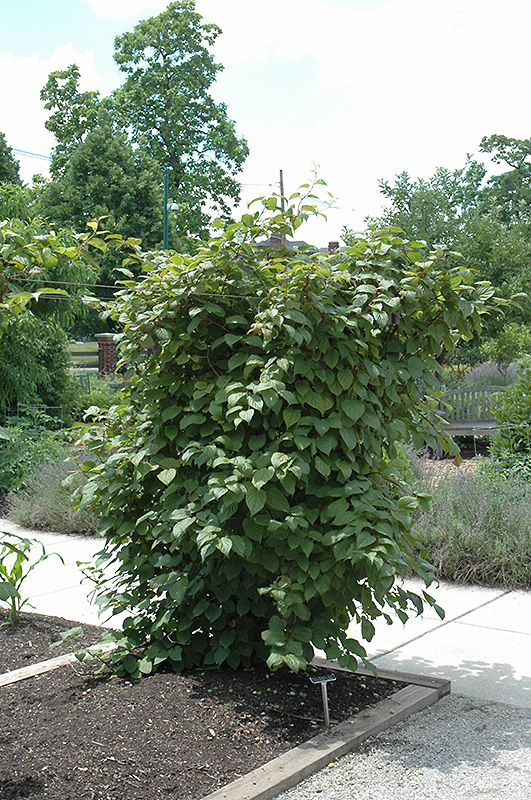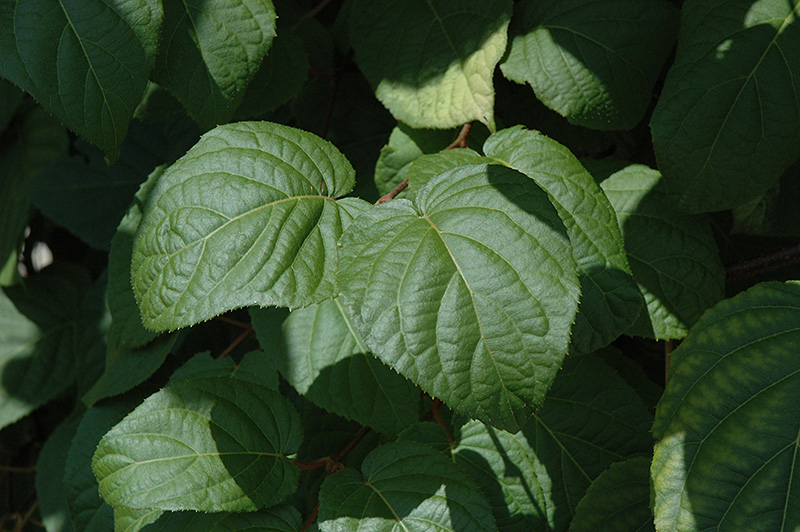>> Home
Red Beauty Kiwi
Actinidia kolomikta 'Red Beauty'
Height: 20 feet
Spread: 24 inches
Sunlight:
![]()
![]()
Hardiness Zone: 3b
Description:
A female selection of this interesting vine valued for its deep green foliage with a reddish cast that is showier in fall; small white fragrant flowers and plentiful fruit after three years or so; use Arctic Beauty for pollenation; excellent for screening
Edible Qualities
Red Beauty Kiwi is a woody vine that is typically grown for its edible qualities, although it does have ornamental merits as well. It produces small green oval fruit which are usually ready for picking from late summer to mid fall. The fruits have a sweet taste.
The fruit are most often used in the following ways:
- Fresh Eating
Features & Attributes
Red Beauty Kiwi has attractive red-variegated dark green foliage on a plant with a spreading habit of growth. The large oval leaves are highly ornamental and turn red in fall. It features dainty fragrant white buttercup flowers with yellow anthers along the branches from mid to late spring. It features an abundance of magnificent green berries from mid to late summer.
This is a dense multi-stemmed deciduous woody vine with a spreading, ground-hugging habit of growth. Its average texture blends into the landscape, but can be balanced by one or two finer or coarser trees or shrubs for an effective composition. This is a relatively low maintenance plant, and is best pruned in late winter once the threat of extreme cold has passed. It has no significant negative characteristics.
Aside from its primary use as an edible, Red Beauty Kiwi is sutiable for the following landscape applications;
- Hedges/Screening
- General Garden Use
Planting & Growing
Red Beauty Kiwi will grow to be about 20 feet tall at maturity, with a spread of 24 inches. As a climbing vine, it should be planted next to a fence, trellis or other rigid structure where it can be trained to grow upwards on it. It grows at a medium rate, and under ideal conditions can be expected to live for approximately 10 years. This variety requires a different selection of the same species growing nearby in order to set fruit.
This woody vine is quite ornamental as well as edible, and is as much at home in a landscape or flower garden as it is in a designated edibles garden. It does best in full sun to partial shade. It prefers to grow in average to moist conditions, and shouldn't be allowed to dry out. It is not particular as to soil type or pH. It is highly tolerant of urban pollution and will even thrive in inner city environments. This is a selected variety of a species not originally from North America.

